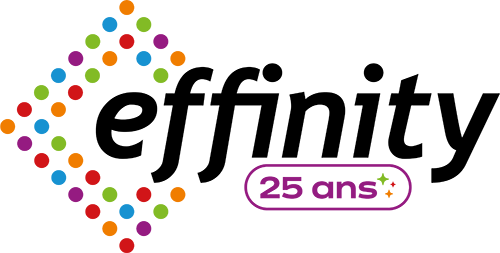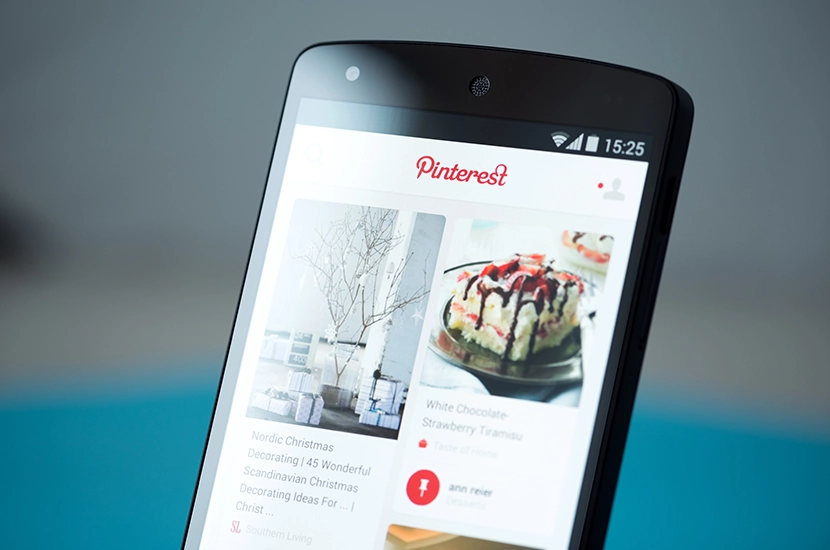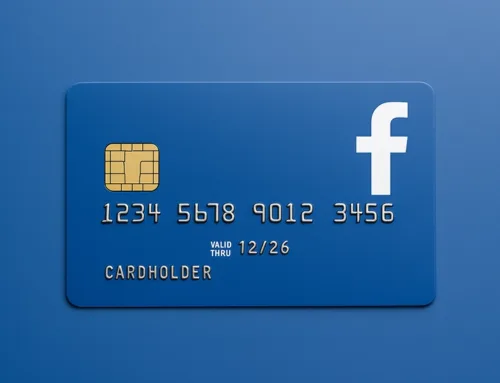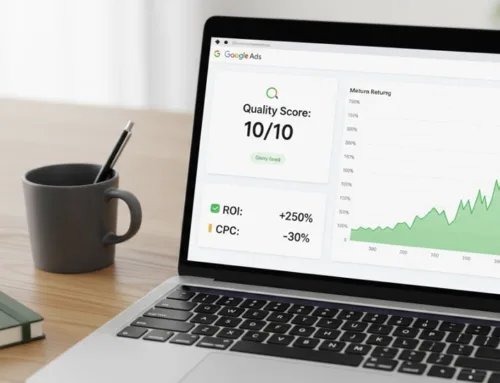Far from being a simple social network, Pinterest has established itself as a powerful visual discovery engine where inspiration is transformed directly into purchase intent. Whereas Meta users come to connect and TikTok users come to be entertained, Pinterest users come to plan and buy. It’s a fundamental distinction and a strategic reason why our Pinterest Ads agency pushes companies to integrate Pinterest Ads into their marketing mix to turn inspiration into growth.
The heart of Pinterest: a unique audience looking for inspiration and purchase
To succeed on Pinterest, it’s fundamental to understand the unique mindset of its users. Unlike platforms where social interaction is paramount, Pinterest users are in an active phase of planning, discovery and projection. They don’t browse aimlessly, they actively build their future projects, which makes them particularly receptive and open to branded content that can help them turn their visions into reality.
A spirit of discovery and action
The mentality of Pinterest users is fundamentally proactive. To seize this opportunity, we need to understand the conceptual framework that contrasts two types of purchase: hedonic and utilitarian.
- Hedonic buying is emotional, focused on experience, pleasure and adventure (fashion, home decoration, travel). Consumers rely on affective cues, and social networks like Pinterest play a key role in nurturing inspiration at a very early stage.
- The utilitarian purchase is rational, cognitive, aimed at accomplishing a precise task (office supplies, household appliances). Consumers compare attributes, are price-sensitive, and make greater use of search engines and third-party reviews.
Pinterest’s strategic strength lies in its ability to intercept the hedonic buying journey at its starting point. The data confirms this: 84% of weekly users are actively considering buying products or services, but are still undecided about the brand. In this environment, where 91% of people say Pinterest is a positive platform, brands aren’t selling a product, they’re offering inspiration that responds to a quest for pleasure. They can thus become a natural part of this discovery process, even before the consumer has a specific brand in mind.
Demographics and confidence: an environment conducive to conversion
With over 500 million monthly active users worldwide, Pinterest’s audience is a particularly attractive demographic for many sectors.
- The audience is predominantly female (around 70-80%).
- Young adults (25-34) and adults (35-49) are the most active age groups, and these segments of the population are often involved in major life projects (planning, family, travel).
More importantly, Pinterest enjoys a very high level of trust, ranking just behind LinkedIn. In a digital landscape where distrust is the order of the day, this positive environment makes ads less intrusive and better perceived. Users see sponsored content not as an interruption, but as a relevant and useful suggestion, greatly increasing the effectiveness of campaigns.
The strategic benefits of Pinterest Ads for your brand
The benefits of advertising on Pinterest go far beyond mere visibility. The platform offers tangible, measurable benefits that directly impact the profitability, customer positioning and sustainability of marketing efforts. By exploiting its unique features, brands can build smarter, more effective advertising strategies.
Intercept customers early in the conversion tunnel
The customer journey, often modeled as a conversion tunnel, begins with a discovery phase. On most platforms, ads target users already advanced in this journey. Pinterest offers a rare opportunity: to reach consumers at the very beginning of their thought process, particularly in the context of a hedonic purchase.
Ads fit naturally into this inspiration phase, when users are exploring ideas without having finalized their choice. For this type of purchase, advertising is not an interruption, but part of the inspiration. By positioning itself at this stage, a brand doesn’t just sell a product, it helps the user define his project, becoming a trusted reference and gradually qualifying prospects.
Attractive return on investment (ROI) and competitive costs
One of the most convincing arguments in favor of Pinterest Ads is its cost-effectiveness. With even less competition than on platforms like Meta (Facebook) or Google, advertising costs are significantly lower.
- Very competitive printing costs: in the French-speaking market, 1,000 impressions generally cost between €1 and €2.5, up to 10 times less than on Facebook.
- High ROI for retail: retail brands can see a return on advertising investment (ROAS) up to twice that of other social networks. This figure is all the more attainable when brands intelligently combine the platform’s free tools (organic pins, catalogs) and paid tools.
This budgetary efficiency enables companies, including SMEs, to generate targeted traffic at lower cost and achieve an excellent return on investment.
A powerful synergy between advertising and search engine optimization (SEO)
Pinterest is a hybrid platform, halfway between social network and visual search engine. This dual nature gives content remarkable longevity. Unlike the ephemeral publications of other networks, a pin is indexed by Google and can continue to generate organic traffic months, even years, after its publication.
A non-intrusive, enhanced advertising experience
On Pinterest, advertising isn’t an interruption; it’s part of the discovery experience. Sponsored pins integrate seamlessly into the news feed, resembling organic content in every way.
This integration is particularly effective in the context of hedonic buying, where the user is actively seeking inspiration. A study reveals that 63% of French users claim that the platform has helped them in their purchasing decisions. This figure shows that advertising is perceived as a service, a source of additional ideas, and not as a nuisance. For advertisers, this guarantees a better-received message and more authentic engagement.
Pinterest’s advertising arsenal: tools for every purpose
To capitalize on this unique and receptive audience, Pinterest provides advertisers with a rich and flexible advertising platform. From creative formats to targeting tools and AI-powered automation, every feature is designed to support brands at every stage of the customer journey and achieve precise objectives.
Define your objectives: from awareness to conversion
Every successful campaign starts with a clear objective. Pinterest Ads structures its campaigns around three major marketing ambitions:
- Brand awareness: ideal for making your brand, products or services known to a wide audience who don’t yet know you.
- Consideration: designed to encourage interaction. The aim is to generate clicks on your pins and attract qualified traffic to your website.
- Conversion: the final objective to encourage users to take action: make a purchase, subscribe to a newsletter, fill in a contact form (leads), etc.
A range of advertising formats to maximize impact
Pinterest offers a wide range of advertising formats to bring your campaigns to life and capture the attention of your target audience.
| Advertising Format | Description and strategic use cases |
| Standard pins | The basic format (image or video). Ideal for promoting existing content and generating traffic simply and effectively. |
| Video Pins | Dynamic, attention-grabbing format. Perfect for tutorials, product demonstrations or brand storytelling. |
| Carousels | Allows up to 5 images to be presented in a single pin. Excellent for showing different facets of a product, a collection or telling a story in several stages. Example: a jewelry brand uses it to highlight charms and pearls for a customizable bracelet. |
| Shopping & Collections ads | Integrated directly into the product catalog, they enable seamless purchasing. Indispensable for e-commerce, advertisers using both Catalogues and Shopping Pins report a 15% increase in their return on advertising investment. |
| Lead Ads | Format with a native form to collect contact information (name, e-mail, etc.) directly on Pinterest. Crucial for service or B2B companies. |
| Quiz Ads | Interactive format that personalizes the user experience by asking questions, then redirecting them to product pages or relevant content based on their answers. |
Pinterest Performance+: AI to automate and optimize your campaigns
Pinterest Performance+ is a suite of tools based on artificial intelligence and automation, designed to simplify ad management and maximize results with less manual effort.
Here are its key benefits:
- Complete automation: AI manages real-time bidding, targeting and budget optimization to ensure that every euro is spent in the most efficient way possible.
- Simplified configuration: Campaign creation is accelerated, with 50% fewer manual entries than with a standard configuration.
- Improved performance: The results are clear to see, with significant improvements in ROAS (return on advertising investment) and lower CPA (cost per acquisition) when using Performance+.
- Creative optimization: AI doesn’t just optimize delivery, it can also enhance visuals by automatically generating relevant backgrounds for product pins or creating ad variants to maximize their impact.
Mastering the game: winning strategies and costly mistakes on Pinterest Ads
Despite its immense potential, success on Pinterest Ads isn’t automatic. As with any advertising platform, a poorly conceived strategy or insufficient follow-up can lead to disappointing results. So it’s crucial to approach the platform with a clear vision, knowing both the potential risks and the best practices for overcoming them.
The risks of poor ROI: when campaigns fail
A balanced approach means recognizing the challenges. Advertiser testimonials highlight the symptoms of strategic inadequacy. The main pitfalls encountered are :
- The risk of spending a substantial budget for very low sales. Such a failure is often the sign of a very utilitarian product promotion on a platform optimized for hedonics.
- The tendency of some campaigns to generate only pin “registrations”, engagement that doesn’t systematically translate into clicks or conversions if the message isn’t aligned with a clear action.
These returns don’t mean that the platform is ineffective, but highlight the consequences of a misaligned strategy, a product unsuited to the audience or a lack of ongoing optimization.
Best practices for high-performance campaigns
To counter these risks and maximize return on investment, it’s essential to adopt a rigorous, creative approach. Here’s a list of actionable tips:
- Take care of your visuals: Pinterest is a visual platform. Use vertical formats (2:3 ratio), high-quality images and videos that tell a story and allow users to imagine themselves with your product.
- Be clear and direct: clarity is more important than ingenuity. Keep your text short and to the point. Include strong, explicit call-to-actions (CTAs) such as “Buy”, “Register” or “Get a quote” to guide the user.
- Ensure consistency: the experience must be seamless. Your brand identity (logo, colors) and ad message must be consistent with the landing page.
- Test and iterate: adopt a “Test and Learn” approach. It’s crucial to test different visuals, ad formats, texts and audiences to identify what generates the best results. Don’t rely on a single campaign to judge the effectiveness of the platform.
- Strengthen your signals: to optimize effectively, you need to measure precisely. Install the Pinterest tag and conversions API on your site. This provides Pinterest’s algorithm with reliable data on user actions (purchases, additions to cart), enabling it to optimize delivery much more intelligently and improve ROI.
Pinterest Ads, a growth lever for your brand?
As part of a Social Ads strategy, Pinterest Ads is an essential strategic platform for brands whose products are visually appealing and whose target audience is in the discovery and planning phase. Its unique positioning as a visual search engine, combined with a positive environment and competitive costs, offers exceptional potential for growth and profitability.
Success, however, requires more than just a presence. It depends on a keen understanding of users’ mindsets, a careful creative strategy and continuous optimization based on reliable data. So the question isn’t whether Pinterest Ads works, but whether your brand is ready to adopt the visual, creative and strategic approach the platform demands. For those that are, Pinterest is not an option, but a powerful growth gas pedal. Don’t hesitate to contact our Pinterest Ads experts, to assess your potential on Pinterest Ads.
Mis à jour le 14 November 2025
Mis à jour le 14 November 2025




